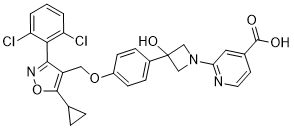Although the manifestations of IL-1RA deficiency in humans are somewhat different from those observed in mice, it is clear that IL-1RA is involved in human arthritis. Recombinant human IL-1RA has been developed as the therapeutic product Anakinra. Administration of Anakinra has been shown to alleviate rheumatoid arthritis and several other inflammatory disorders including systemic-onset juvenile idiopathic arthritis, familial Mediterranean fever and others. Because of its involvement in human disease there has been substantial interest in the mechanisms by which IL-1RA modulates arthritis. Spontaneous arthritis is dependent not only on IL-1RA deficiency but also other as yet unidentified genetic factors. In order to identify those factors we used classical genetic techniques and bred susceptible and resistant mice to obtain an F2 generation and identified QTL associated with arthritis susceptibility. After we conducted QTL analysis with phenotypic and genotypic determination of 191 F2 progeny, we obtained evidence for potential QTL on chromosomes 1, 6, 11, 12, and 14. The data suggested that the QTL on chromosomes 1 and 6 had the greatest influence on disease whereas there was weaker evidence for the involvement of potential QTL on chromosomes 11, 12, and 14. The QTL on chromosome 1 covers a large region at the distal end of the chromosome. Because of the strength of the association of spontaneous arthritis and this QTL we undertook additional studies to further characterize it.  We hypothesized that one gene or a few genes within the QTL region regulate spontaneous arthritis. Accordingly, if a genomic fragment that contains the gene/s responsible for regulation of IL-1RA and development of spontaneous arthritis in BALB/c was replaced by the analogous fragment from DBA/1 mice which are resistant to spontaneous arthritis, then disease in the new strain would be reduced in incidence and/or severity. To test our hypothesis, we have developed congenic strains that contain the genomic fragments in the region of the QTL from DBA/1 mice on a BALB/c background. Congenic strains are animals in which a genetic locus has been moved from one strain/ line to the background of another strain/line by back-crossing. Polymorphism of molecular markers is used to detect the source strain of the genome components of a congenic strain. For these experiments, we used speed or marker-assisted congenic breeding. Theoretically, the classical protocol of congenic breeding needs about 10 generations, at which 99+% of the genetic background of the progeny is of recipient origin while still retaining heterozygosity at the region of interest. However, the availability of dense genetic maps of the mouse genome has allowed the development of marker-assisted breeding strategies, which reduce the number of generations required to eliminate donor strain-derived alleles outside the genetic region of interest.
We hypothesized that one gene or a few genes within the QTL region regulate spontaneous arthritis. Accordingly, if a genomic fragment that contains the gene/s responsible for regulation of IL-1RA and development of spontaneous arthritis in BALB/c was replaced by the analogous fragment from DBA/1 mice which are resistant to spontaneous arthritis, then disease in the new strain would be reduced in incidence and/or severity. To test our hypothesis, we have developed congenic strains that contain the genomic fragments in the region of the QTL from DBA/1 mice on a BALB/c background. Congenic strains are animals in which a genetic locus has been moved from one strain/ line to the background of another strain/line by back-crossing. Polymorphism of molecular markers is used to detect the source strain of the genome components of a congenic strain. For these experiments, we used speed or marker-assisted congenic breeding. Theoretically, the classical protocol of congenic breeding needs about 10 generations, at which 99+% of the genetic background of the progeny is of recipient origin while still retaining heterozygosity at the region of interest. However, the availability of dense genetic maps of the mouse genome has allowed the development of marker-assisted breeding strategies, which reduce the number of generations required to eliminate donor strain-derived alleles outside the genetic region of interest.
By employing this strategy of speed congenics we were able to rapidly produce the mouse strains used
Leave a reply